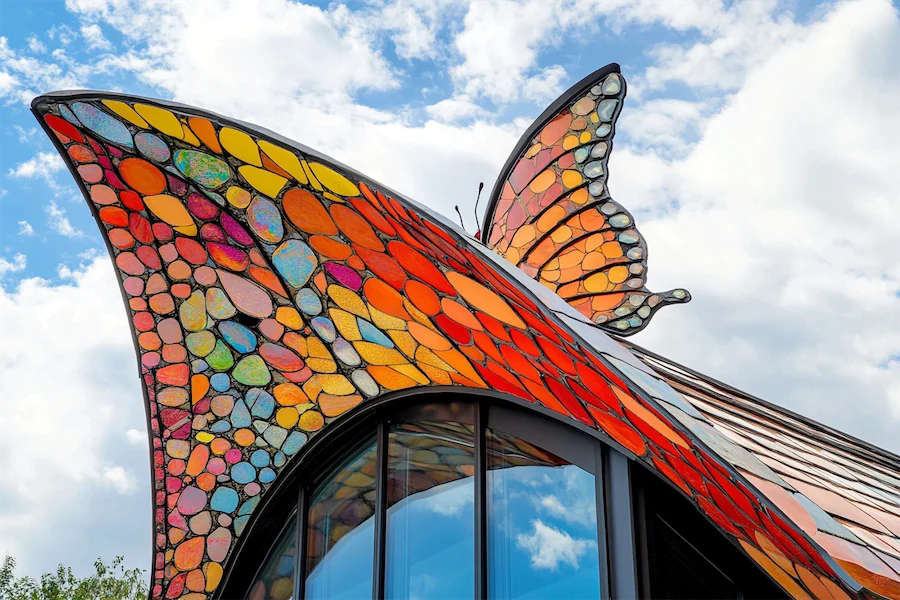A butterfly roof, also known as a V roof, is an architectural design where two roof surfaces slope downward from opposing edges to meet at a central valley, resembling the wings of a butterfly in flight.
History and Origins of Butterfly Roofs
The butterfly roof concept dates back to 1930 when Swiss-French architect Le Corbusier designed the Maison Errazuriz, a vacation house in Chile, featuring this distinctive form.
In the United States, the design gained popularity in the mid-20th century, particularly in the 1950s, as part of the Mid-century modern architecture movement. Architects like William Krisel and Dan Palmer utilized butterfly roofs in residential developments in Palm Springs, California, contributing to the style’s widespread adoption.
Key Features of Butterfly Roofs
- Aesthetic Appeal: The unique V-shaped silhouette of butterfly roofs provides a visually striking alternative to traditional roof designs, contributing to a modern and dynamic architectural appearance.
- Natural Light Enhancement: The design allows for higher perimeter walls, enabling the incorporation of clerestory windows that facilitate increased natural light penetration into interior spaces without compromising privacy.
- Rainwater Collection: The inward-sloping surfaces naturally channel rainwater to the central valley, making it efficient for rainwater harvesting systems.
Applications of Butterfly Roofs
- Residential Architecture: Butterfly roofs are commonly used in homes to create open, light-filled spaces that connect indoor and outdoor environments, aligning with modern design principles.
- Sustainable Design: The form is conducive to installing photovoltaic panels on the roof’s slopes, optimizing solar energy capture, and supporting sustainable building practices.
Considerations When Choosing a Butterfly Roof
- Structural Engineering: The design requires precise engineering to manage loads, especially in regions prone to heavy rainfall or snow, to prevent water accumulation and ensure stability.
- Maintenance: The central valley must be adequately waterproofed and maintained to prevent leaks, necessitating regular inspections and upkeep.
- Climate Suitability: In areas with high wind exposure, the roof’s shape may be susceptible to uplift forces, requiring additional structural considerations.
Conclusion
Butterfly roofs offer a distinctive architectural statement that combines aesthetic appeal with functional benefits such as enhanced natural lighting and efficient rainwater management. When thoughtfully designed and constructed, they can contribute to sustainable and visually engaging building solutions.
